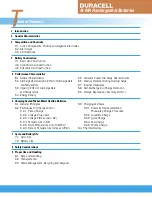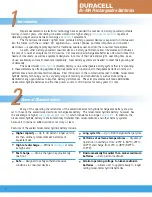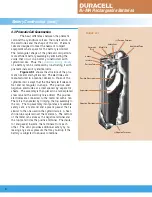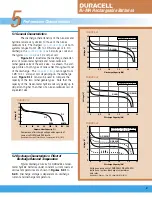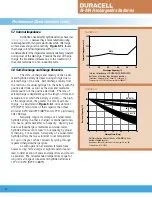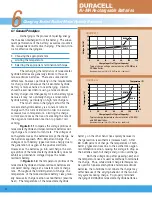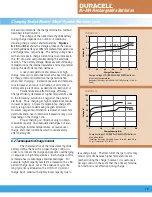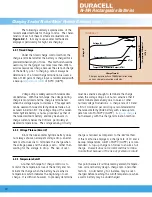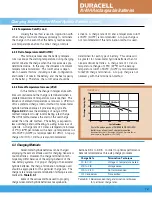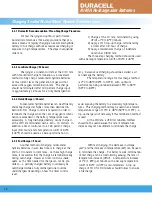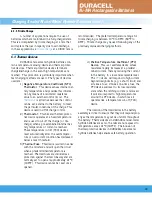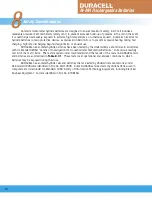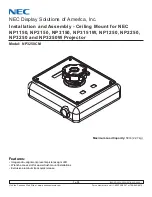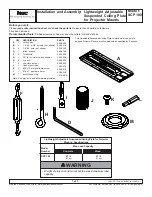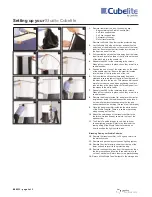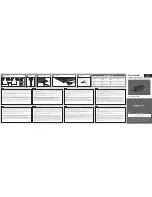
Typically, when the current is higher and the
temperature is lower, the operating voltage will be
lower. This is due to the higher
“IR” drop
that
occurs with increasing current and the cell’s increas-
ing resistance at the lower temperatures. However,
at moderate
discharge rates
(
≈
C/5), the effect of
low temperature on the capacity of the nickel-metal
hydride battery is minimal.
5.3 Capacity: Effect of Discharge Rate
and Temperature
The
ampere-hour capacity
of the battery is
dependent on the discharge current and temperature,
as can be observed in
Figure 5.3.1
. It should be noted
that the delivered capacity is dependent on the cutoff
or end voltage. The delivered capacity can be increased
by continuing the discharge to lower end voltages.
However, the battery should not be discharged to too
low a cut-off voltage (less than 0.9 volts per cell) as
the cells may be damaged (see Section 5.6). The
recommended
cutoff voltage
for nickel-metal hydride
batteries is 1.0 volt per cell.
Typically, optimum performance of the nickel-
metal hydride battery is obtained between 0
°
C and 45
°
C
(32
°
F and 113
°
F). The performance characteristics of
the battery are affected moderately at higher tempera-
tures. At lower discharge temperatures, performance
decreases more significantly, caused primarily by the
increase in internal resistance. Similarly, the effects of
temperature on performance are more pronounced at
higher discharge rates. The capacity of the battery
decreases more noticeably as the current increases,
particularly at lower temperatures.
5.4 Energy Density
Energy density is the ratio of the energy available
from a battery to its volume or weight. A comparison of
the performance of various battery systems is normally
made on practical, delivered energy density per-unit-
weight or volume using production-based batteries and
performance as opposed to theoretical energy density.
Comparing energy densities, one must consider the
influence of cell size, internal design, discharge rate and
temperature conditions, as these parameters strongly
impact performance characteristics.
Ni-MH Rechargeable Batteries
FIGURE 5.3.1
2.5
2.0
1.5
1.0
0.5
0
Discharge Rate (A)
C/ 5 (0.48)
2C (4.8)
C (2.4)
21
°
C (70
°
F
)
45
°
C (113
°
F
)
0
°
C (32
°
F
)
-20
°
C (-4
°
F
)
Typical capacity of DURACELL DR30 batteries under
constant current discharges at various temperatures.
[Conditions: Charge: 1C to -
∆
V = 60mV @ 21
°
C (70
°
F); Discharge
to 6.0V]
C
apacity (Ah)
7
Performance Characteristics (cont.)

